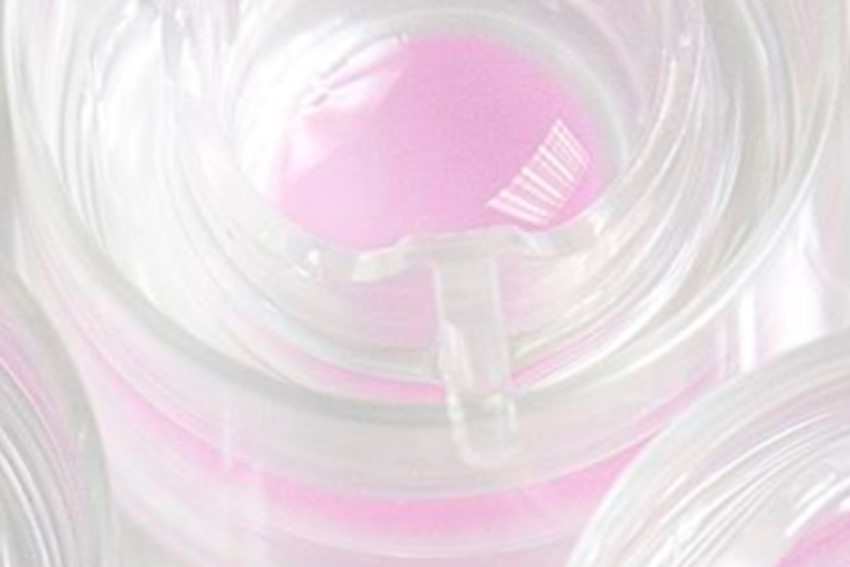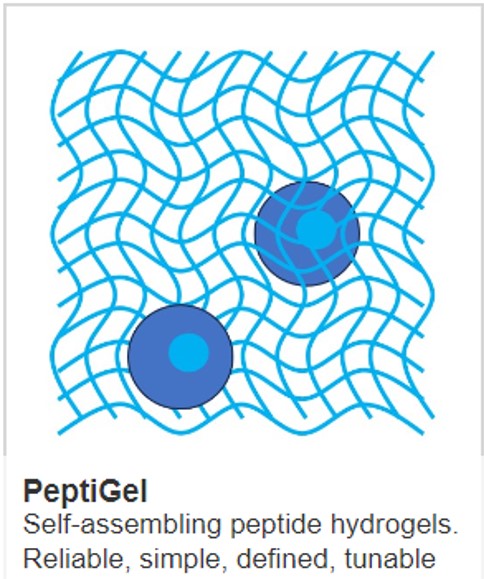The Right Stiff: scaffolds for 3D cell culture

Scaffolds have an important role to play in tissue engineering, as they are a substrate that can be used to mimic the native extracellular matrix (ECM). The properties of scaffolds have also been shown to affect cell behaviour such as cell attachment, differentiation and proliferation.
Scaffold stiffness is vital when it comes to choosing the most appropriate scaffold for 3D cell culture, not least because scientific research has shown that it can adversely affect drug resistance and cancer progression. But why is this?
Elements of the ECM that can affect Scaffold Stiffness
The extracellular matrix is an intricate network of multidomain macromolecules that are organised in a manner specific to the cells/tissues being targeted, as well as being a reservoir of bioactive molecules and growth factors.
All of the components within the ECM link together to form a stable structure that contributes to the mechanical properties of tissues. The ECM is, therefore, a dynamic entity of vital importance in 3D cell culture, as it not only determines but also controls the most fundamental behaviours and characteristics of cells, including:
- Adhesion
- Apoptosis
- Differentiation
- Migration
- Polarity
- Proliferation
There are around 300 proteins that make up the core ECM with the major components including collagen, cell-binding glycoproteins, elastin and proteoglycans – each of which has distinct biochemical and physical properties.
The biochemical properties within the ECM scaffold allow the attached cells to sense and interact with their environment using signal transduction pathways through the chemical cues provided by the ECM components. Therefore, interactions between different matrices via specific sets of receptors can result in different cellular responses.
What the ECM does is act as an anchorage site, movement track or physical barrier for cell migration as the physical properties of the ECM, including its stiffness, provide the cells with physical clues. Scientific research has shown that stiff matrices can induce robust focal adhesions, integrin clustering and Rho and MAP kinase activation, which can lead to increased contractility and proliferation.
Scaffold stiffness has also been shown to regulate differentiation, as on stiff matrices mesenchymal stem cells favour an osteogenic path, whereas on soft matrices they tend to favour a neurogenic path.
Human tissues are composed of ions, macromolecules, minerals and water, and so their mechanical properties are wide-ranging, from cell membranes with a modulus of about 10 MPa to bone which has ultimate tensile strength and modulus of about 200 MPa and 15 to 20 GPa.
What this shows us is that it is critical to match the stiffness of the scaffold as close as possible to the tissue type, in order to create a more representative in vivo environment in vitro.
As we have mentioned before, there are a lot of ECM products on the market for researchers to choose from, but the majority of them are very weak scaffolds with a rheological G’ value of between 40-4000 pa, and they cannot be tuned.
MatrigelTM, for example, has a G’ value of between 40 to 400 Pa depending on the batch (as it has a lot of batch-to-batch variation). Even some animal-free scaffolds, such as polysaccharide-based hydrogels, which have a range of around 4000 pa, can’t be tuned significantly.
The PeptiGel® range we offer here at Cell Guidance Systems are specifically designed with a range of chemical functionalities and mechanical properties to mimic the native cellular micro-environment and allow the growth of any cell type. This means you can explore the influence of scaffold stiffness on 3D cell culture with confidence.
Our PeptiGels® are used for both 2D and 3D cell culture and so their charge, functionality and stiffness can all be independently controlled to replicate the native cellular environment of most human tissue.
IMAGE: PeptiGel Credit: Cell Guidance Systems



